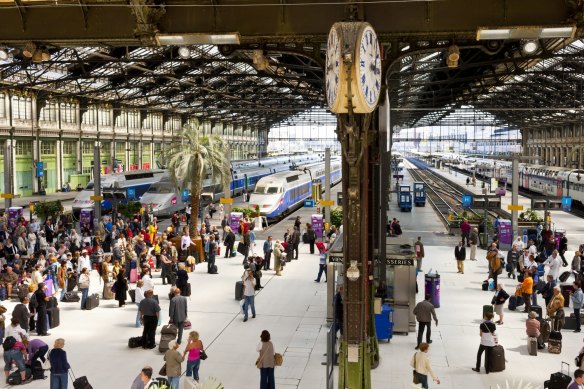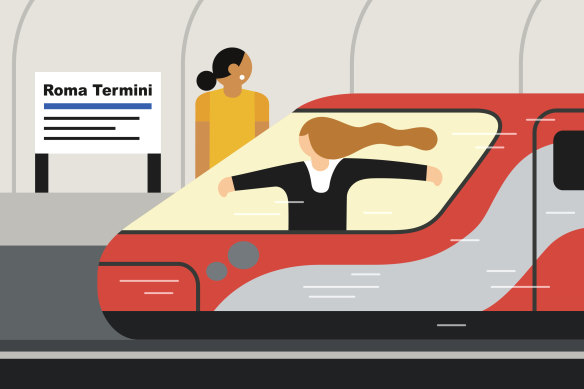What you need to know about Europe’s train stations
First up, be sure you’re at the right station. Many European cities have several intercity stations (Paris has six, London 12) depending on what direction trains are heading in.
If you haven’t researched online, study the station’s train-schedule posters, which are nearly always yellow for departures and white for arrivals. Three key symbols are a cross for Sunday and public-holiday services, crossed hammers for weekdays, and an R for trains requiring reservations.

Paris Gare du Nord, Europe’s busiest train station.Credit: iStock
Although you’ll often get the best price for advance online tickets, you can just rock up, especially for local rides. If your journey is straightforward, avoid the queues at staffed windows and use concourse ticket machines, which invariably have an English-language option.
Validate your ticket at the stamping machines at platform entrances. You’ll be fined for riding with an un-validated ticket unless you’re adept at the innocent-tourist act.
Large electronic boards show departures. This is where to check your platform number, which isn’t usually marked on tickets. You might need to know the train’s final destination if yours is a stop along the way, though these are often listed.
Note that platforms are sometimes announced – or changed – a few minutes before the train’s departure, so keep an eye on the display.
Most stations have no physical barriers between street and train, but there are exceptions, such as major Italian stations, or high-speed platforms in France and Spain. Passport control (if any) usually takes place on the train, except for Eurostar out of London.

Be prepared for platform changes.Credit: Greg Straight
You could feel confident arriving at a station 15 minutes before departure. Connection time depends on whether you need to buy another ticket, and the type of train you’re connecting from: a long continental journey is more likely than a local one to be delayed.
Two-minute transfers are fine in small Swiss towns, but elsewhere you might have to schlep across a busy station to an obscure platform, or find the platform lift. Paris Gare du Nord, Europe’s busiest station with 190 million annual passengers, has 36 platforms.
If your onward train is local don’t stress: a local ticket is valid for any train, and another will be along soon if you miss the first. But if you have a reserved seat or sleeper on an intercity train, you won’t want to miss it, as you’ll have to buy another ticket, so leave yourself a half-hour.
Once on the platform, consult the poster or electronic board that shows you where carriages stop along the platform. You’ll need to know the location of first- or second-class carriages. If you have a reservation with a carriage number, knowing where to board saves a last-minute rush along the platform.
Don’t get antsy if your train isn’t there until 30 seconds before departure time, even in the originating station. European trains are efficient. They turn up, you board, they often leave within a minute. Arrivederci Italia, bonjour la France.
Sign up for the Traveller newsletter
The latest travel news, tips and inspiration delivered to your inbox. Sign up now.